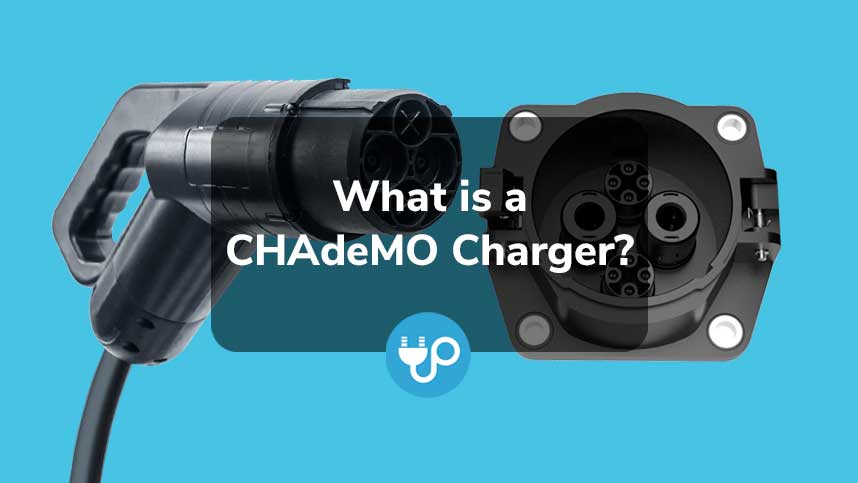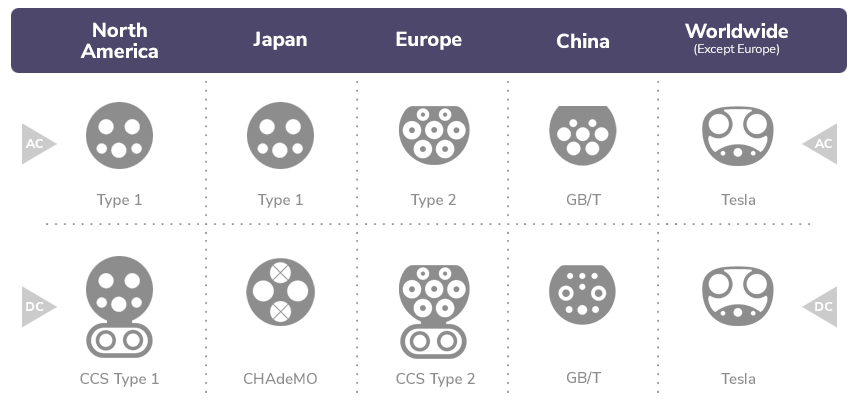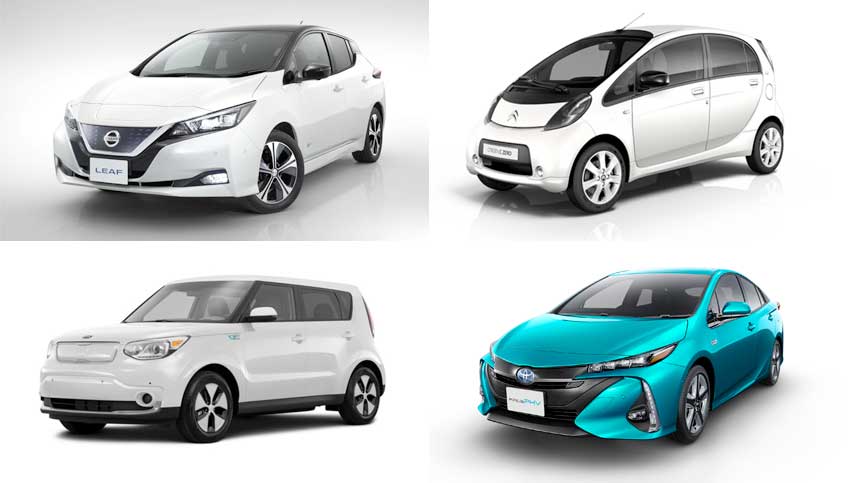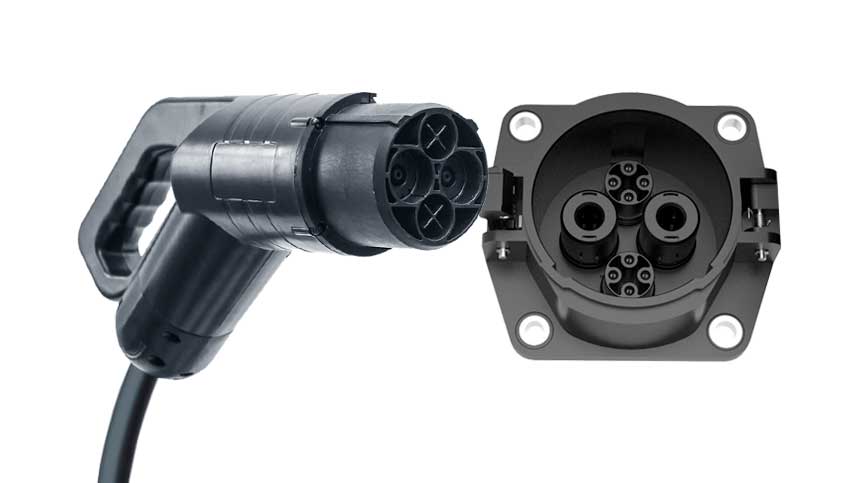
What is a CHAdeMO Charger?
Electric vehicle owners will be familiar with the struggles of charging plugs and the various different options available.
In total, there’s currently 5 different types electric car plugs in use in the EV world, so all these options can seem like a minefield.
Most electric vehicle manufacturers use only one or two types of standardised plugs, with the CHAdeMO plug being one of them, if a little less common.
This article explains what a Chademo plug is, its pros and cons, and what vehicles are compatible with it.
Chapters
What is CHAdeMO?

CHAdeMO is a rapid charging standard of EV charging socket found on certain brand of electric vehicles, and at select charging stations.
CHAdeMO plugs were first adopted by Nissan, Toyota, and other Japanese manufacturers around 2010-2011, hoping to create a worldwide standard charging system across the electric vehicle industry.
It was the first rapid-charging platform for electric vehicles, enabling charging rates of up to 150 kWh, although the current maximum for most EVs is 50 kWh.
CHAdeMO stands for “Charge de Move”.
The plug is an industry-standard and highly popular across the UK and EU.
Which Cars Use CHAdeMO Charging?

While CHAdeMO charging is popular to a certain degree, it’s not a universal charger plug.
Nowadays, more EVs are sold with CCS (Combined Charging System) or Type 2 charger cables across Europe and the EU.
The Nissan Leaf, Lexus UX300e, and Mitsubishi Outlander PHEV use the CHAdeMO connector for example.
Additionally, the Toyota Prius PHV, Tesla Model S (with charging adapter), Kia Soul EV MK1, Citroen C-Zero, and Citroen Berlingo continue to use CHAdeMO charging systems.
While CHAdeMO is still used on a few EVs, most EVs sold in Europe, the UK, and Japan by and large now use CCS (Combined Charging System) chargers.
CHAdeMO is slowly being phased out in preference for CCS and potentially Tesla Superchargers.
Is CHAdeMO The Only Fast Charging Option?

CHAdeMO debuted in 2010 as the first widespread EV fast-charging system.
However, it is not the only fast-charging system available in the UK.
CCS (Combined Charging System) is capable of fast charging from 50kWh to as much as 400 kWh.
A CCS plug contains a Type 1 and Type 2 charging plug to handle multiple charging stations.
The Type 2 plug can perform DC fast-charging capabilities.
Tesla Superchargers have fast-charging capabilities.
Superchargers can transfer up to 250 kWh, providing a full charge in under one hour.
A Supercharger is identical to a standard Type 2 plug, meaning Tesla owners may charge at Type 2 equipped charging stations.
However, only Teslas may can Superchargers.
Should I Buy A Car Using CHAdeMO Charging?
CHAdeMO was the first charging system that was intended to be universal.
However, most EVs currently use CCS, Type 2, or Tesla Superchargers.
CHAdeMO is an effective charging system.
Unfortunately, CCS and Type 2 dominate EV charging systems and stations.
Buying a new EV with CHAdeMO may be a poor choice owing to the scarcity of CHAdeMO charging points.
If you already own an EV with CHAdeMO charging, you may want to consider trading it in for an EV equipped with CCS, Type 2, or purchase a Tesla.
CHAdeMO is not mechanically inferior in any way, but most public UK charging points are now offering CCS, Type 1/Type 2, or Tesla Supercharger.
Conclusion
CHAdeMO chargers were the first fast-charging system to be released for EVs.
However, they are being phased out in favour of CCS and Tesla Supercharger systems.
CHAdeMO charging systems are useful but slowly becoming obsolete.
CCS and Tesla Superchargers are the most commonly found at EU and UK charging points.


Blog Archive
- Electric Car Tyres – All You Need to Know
- Are Electric Cars Cheaper to Run?
- Do Electric Cars Use Oil?
- 70% of UK Councils Have No On-Street EV Charging Plans
- Joosup + waEV-Charge: Electrifying the Future Together!
- What is an EV Battery Lease?
- 8 Great Reasons to Share Your EV Charger
- What is OZEV?
- What is ULEZ Compliant?
- Electric Car Charging at Home with No Driveway – What Can You Do?
- EV Home Charger Installation for Beginners
- How to Drive an Electric Car
- What is Range Anxiety & How Do We Defeat It?
- What is Destination Charging?
- What is a CHAdeMO Charger?
- What is CCS Charging?
- What is Peer to Peer EV Charger Sharing?
- Types of Electric Car Plugs Explained
- What is Community Charging?
- How Long Does It Take to Charge an Electric Car?

